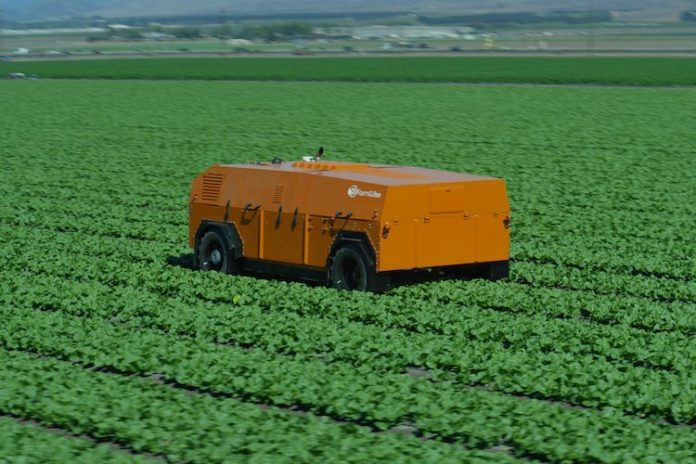
Weeds are unwanted plants that interfere with the use of land and water resources, posing a major problem in agriculture by competing with beneficial vegetation. The losses caused by weeds surpass those from any other agricultural pest, accounting for 45% of the total annual loss in agricultural production, compared to insects at 30%, diseases at 20%, and other pests at 5%.
Robotic weeding systems are revolutionizing agriculture, offering high-tech solutions to this enduring challenge. These advanced machines, equipped with technologies such as computer vision, artificial intelligence (AI), GPS, and various sensors, are capable of identifying and eliminating weeds with remarkable precision. They reduce reliance on chemical herbicides, increase efficiency, and offer significant labor cost savings, contributing to sustainable and environmentally friendly farming practices.
This article delves into the top agricultural robots for weed control, exploring their functions, benefits, and transformative impacts.
1. Andela Robot Weeder ARW-912
The Andela Robot Weeder ARW-912 is a fully robotized machine and a finalist for the Ag Robot of the Year 2024 award. It features 12 weeding units and a 9-meter working width, making it suitable for large fields. The ARW-912 uses cameras to detect weeds and eliminates them with a probe, leaving the soil undisturbed. It is solar-powered, allowing for continuous operation without the need for external power sources.
2. Ekobot WEAI
The Ekobot WEAI is another contender for the Ag Robot of the Year award, renowned for its precision weeding capabilities ideal for delicate crops like vegetables. Its advanced vision system ensures accurate weed detection and removal, minimizing crop damage.
3. Carbon Robotics LaserWeeder
Carbon Robotics’ flagship product, the LaserWeeder, utilizes AI and laser technology to eliminate weeds. It has been credited with reducing weed control costs by 80% while boosting crop yield and quality. The LaserWeeder is available in two versions: a traditional wheeled model and a new Track LaserWeeder designed for custom track systems.
4. FarmDroid FD-20
The FarmDroid FD-20 is the world’s first commercially successful robot designed for both seeding and weeding. It uses high-precision RTK GPS technology and computer vision to locate crops and eliminate weeds between them. This solar-powered robot is popular with organic farms due to its chemical-free approach to weed control.
5. Naïo Ted, Oz and Dino
Naïo Technologies offers a range of robots for mechanical weed control in different field sizes. The Naïo Ted is designed for vineyards, while the Naïo Oz is suited for large-scale open fields. Both are fully electric and autonomous, using various weeding attachments and advanced navigation for precise weed removal. The Dino is a large-scale vegetable weeding and hoeing robot, smaller and lighter than a tractor, and powered by electricity. It also collects data about crops to aid in yield management.
6. Hortibot
Hortibot is designed for use in greenhouses and high-value vegetable crops. It uses high-resolution cameras and machine learning to identify weeds, then mechanically removes them using various tools. It can also perform other tasks such as fruit thinning and crop monitoring, making it a versatile tool for greenhouse operations.
7. LettuceBot2
LettuceBot2 from Blue River Technologies is specifically designed for lettuce fields. It uses computer vision to identify individual lettuce plants and weeds, then mechanically removes weeds and unwanted lettuce plants, significantly reducing the amount of herbicide needed in lettuce production.
8. Tertill
The Tertill Weeding Robot is a solar-powered, self-operating solution for home vegetable gardens. It uses churning wheels to disrupt weed seeds and a string trimmer to tackle sprouted weeds, all while avoiding plants with height detection and plant guards. This easy-to-use robot requires minimal setup and is ideal for gardens with defined rows and borders.
Advantages of Weeding Robots
- More Accurate Weed Detection: Weeding robots offer exceptional precision in weed detection and removal through machine learning and advanced vision systems, minimizing crop damage and improving weeding efficiency.
- Reduced Chemical Use: Many weeding robots either mechanically remove weeds or apply herbicides in a highly targeted manner, significantly reducing overall chemical usage and benefiting organic farms.
- Sustainability and Soil Health: By minimizing herbicide usage, weeding robots contribute to sustainable farming practices, preserving soil health and biodiversity.
- Data Collection: Equipped with sensors, weeding robots provide valuable field data that can be used to monitor crop health and optimize farming strategies.
- Resilience to Labor Shortages: Weeding robots provide a reliable alternative in the face of labor shortages, reducing labor costs and improving worker safety.
Limitations of Weeding Robots
- High Initial Costs: The significant upfront cost of weeding robots can be a barrier, especially for small and medium-sized farms, although long-term savings in labor and chemicals can offset these expenses.
- Complexity of Deployment: Understanding the technologies used, including setup, operation, and maintenance, can present a steep learning curve.
- Need for Reliable Connectivity: Autonomous robots rely on connectivity for data transmission and navigation, posing challenges in remote areas with poor internet or GPS access.
- Navigation and Maneuverability: While well-equipped for flat terrains, weeding robots may face difficulties in uneven fields or those with obstacles.
Despite these limitations, advancements in agricultural robotics promise more sophisticated, accessible, and efficient weeding robots in the future, further transforming modern, tech-driven, and sustainable agriculture.






















